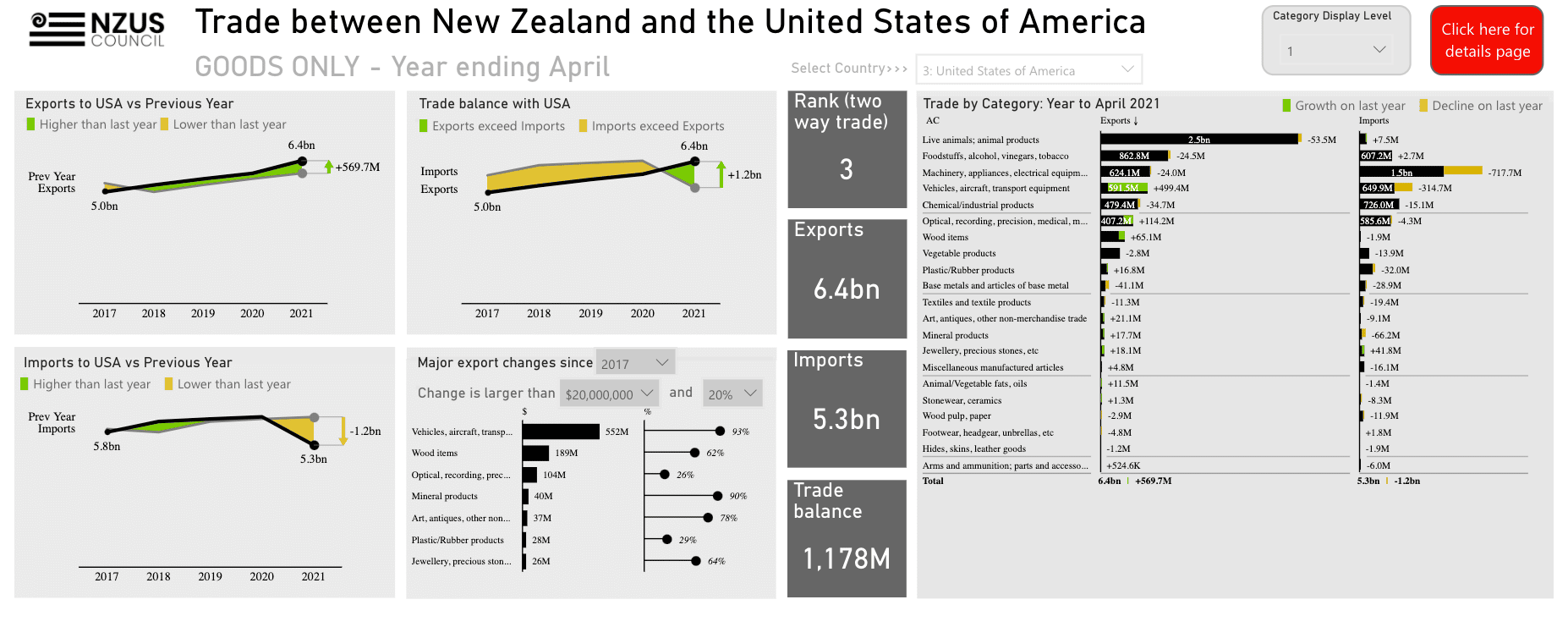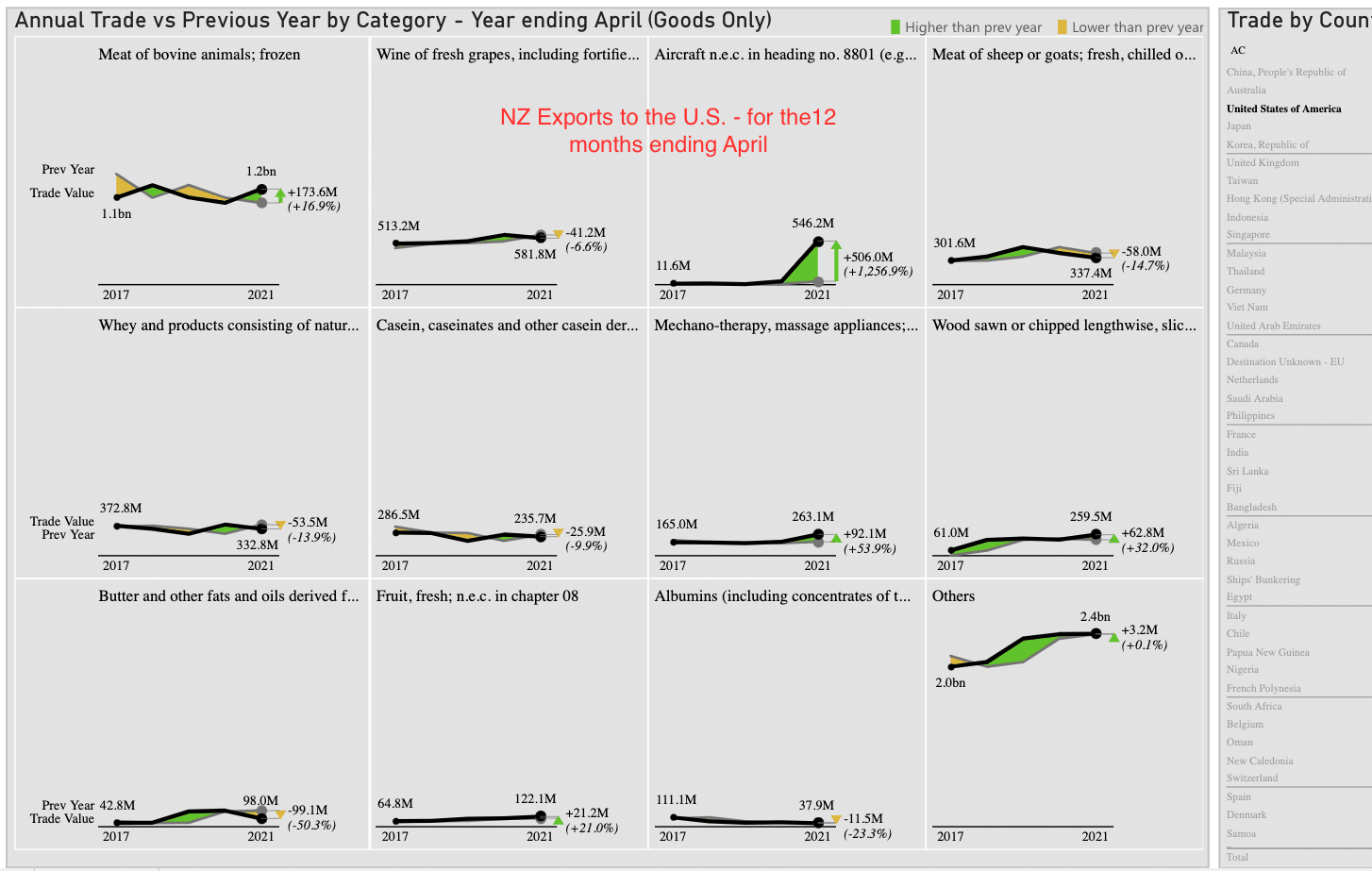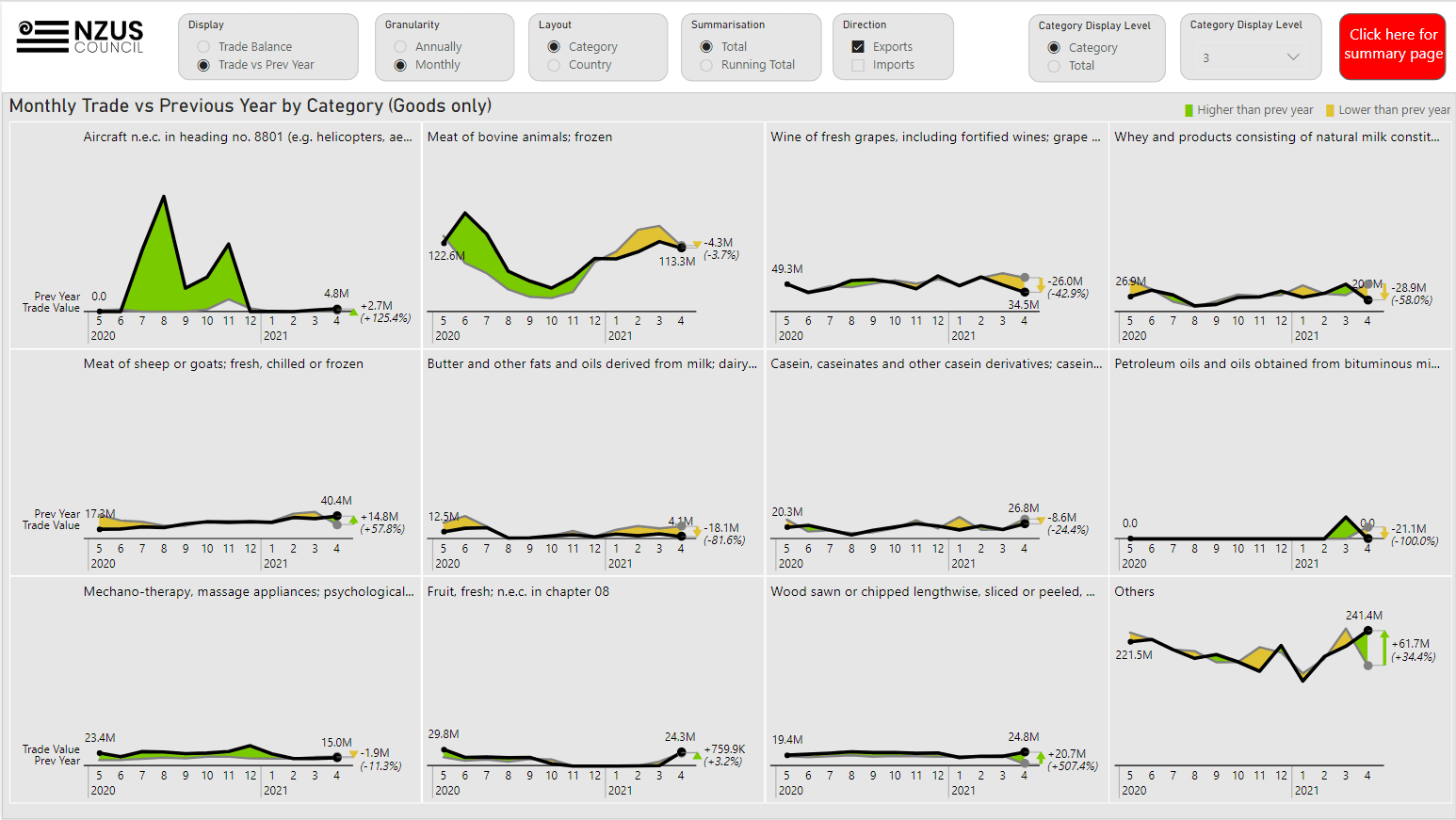We expect to see ongoing month-to-month volatility in many of New Zealand’s exports to the U.S. over the short term as the impact of ongoing global supply chain issues plays out. This is affecting the ability of Kiwi exporters to get product into containers at the right time and place, find ships, and get product cleared at ports.
Jordan Small
Executive Director, NZUS Council
NZUS Council executive director Jordan Small says the story from the latest update to the monthly goods trade data is both a positive and cautionary one.
Mr Small says the overall 12-month picture for our goods exports to the U.S. is positive, with growth of $569M over the period. There was growth in frozen beef exports by 16.9%, mechano-therapy appliances 53.9%, and sawn wood products 32%. However the month-to-month data reflects increasing volatility and the challenge of global supply chain issues.
“We expect to see ongoing month-to-month volatility in many of New Zealand’s exports to the U.S. over the short term as the impact of ongoing global supply chain issues plays out. This is affecting the ability of Kiwi exporters to get product into containers at the right time and place, find ships, and get product cleared at ports.”
The NZUS Council surveyed a selection of large New Zealand exporters into the United States who consistently cited global supply chain issues as a major problem. Shipping delays of up to 6-8 weeks, difficulties getting containers, and slow clearance through U.S. ports were common themes.
Catherine Beard, executive director of Export NZ says, “We are definitely hearing from more stressed exporters about the shipping and logistics problems they are facing, which is a combination of being unable to get predictable slots on ships and the sky-high prices they are being charged.”
Mr Small says a key takeaway from the data is that U.S. and global demand for many of our largest exports remains rock solid, meaning we will continue to see higher global prices and exporters responding to this and shifting between markets.
“U.S. demand for many of our exports remains steady and the U.S. continues to be a key market in the planning of our exporters. For exports such as beef and wine the U.S. is expected to remain their largest market over the coming 12 months. The reopening of food service and restaurants with the vaccination rollout in the U.S. will also be positive for many of our exporters to the U.S.”
Mr Small says the NZUS Council supports the Prime Minister’s commitment to pursuing an enhanced trade relationship with the U.S. over this term.
“Continuing to grow the significant two-way trade growth potential for the US and New Zealand will help New Zealand achieve the Government’s call for further export market diversification and support New Zealand’s recovery from the pandemic.”
The NZUS Council is a New Zealand organisation, established in 2001, focused on advancing New Zealand’s interests in a stronger relationship with the US.
KEY FIGURES: NZUS Council Trade Dashboard
12-months – ending April 2021:
-$569.7M – growth in NZ goods exports to the U.S. over the 12-month period.
-Movements in some of the biggest NZ exports to the U.S.: frozen beef up 173.6M (+16.9%), wine down 41.2M (-6.6%), chilled sheep meat down $58M (-14.7%), whey products down $53.5M (-13.9%), casein products down $25.9M (-9.9%), mechano-therapy, massage appliances up $92.1M (+53.9%), wood up $62.8M (+32%).
Monthly – April 2020 versus April 2021:
-$8.2M – decline in NZ goods exports to the U.S.
-Movements across some of the biggest NZ exports to the U.S.: frozen beef down 4.3M (-3.7%), wine down $26M (-42.9%), chilled sheep meat up $14.8M (+57.8%), whey products down $28.9M (-58.9%), casein products down $8.6M (-24.4%), mechano-therapy, massage appliances down $1.9M (-11.3%), wood up $20.7M (+507.4%).
Summary of key industry comments:
-Ongoing global supply chain impacts. Container and shipping problems are in some cases resulting in 8-week delays and slow clearance through U.S. ports is still a problem.
-U.S. demand is strong. At the same time global demand is also strong with key exports following better prices from other markets (including China). Reopening of food service and restaurants in the U.S. will be positive for demand.
-Global supply constraints. For major exports like beef prices are likely to remain high as Brazil and Australia rebuild herds and the extent of the Argentine beef export ban is still to be seen.
-Subsidy issues in the dairy industry have seen high domestic stocks of butter and cheese.
Screenshots from dashboard:




